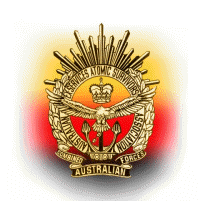Seventy years ago, the British military conducted Australia’s first-ever nuclear weapons test on the Montebello Islands. Radiation is can still be detected on the Islands which occupy an archipelago of around 174 small islands (about 92 of which are named) lying 12 miles north of Barrow Island and 81 miles off the Pilbara coast of north-western Australia. It is not clear if the islands are completely safe.
Since 2019, an Edith Cowan University (ECU) study has been measuring exactly how much radioactivity still exists in the marine sediment on the islands. The team conducting the study has collected and tested more than 100 samples of marine sediments and marine life from the archipelago of islands.
Madison Williams-Hoffman is a PhD student and is the lead researcher for the study. She said that researchers were still investigating the full extent of the radiation and the risk that it may pose.
The scenic archipelago is among the most biodiverse marine environments in the world. It is a popular destination for tourists and fishers. Williams-Hoffman said that is was unrealistic to enact a blanket ban on visiting the area because the remote location of the islands would make it difficult to enforce.
Williams-Hoffman hopes that the study will give people the power to make an informed decision as to whether they would be comfortable visiting the area. She said, “Even if you tell someone you can't go there because [of] radiation risks, there's always someone who'll want to and you won't entirely be able to stop them. But to give them the information so that they can make the decision for themselves, I think it's a really important output from this project.” She added that the study’s first findings will be published next year.
Jim Marlow is one of the many Australian servicemen who witnessed the test. They watched the historic moment from the deck of a small ship six miles away. Marlow said, “We knew something was happening but there was little detail about it. We were just told to assemble on the deck, we were told to cover our heads and our eyes. It frightens the s**t out of you because you couldn't say you expected it because you didn't, you didn't know it was coming. A loud bang followed by a rumble … and you see the smoke [and] sand starting to build up and it goes up and up and up and lines the sky."
Marlow is also part of the Australian Ex-Serviceman Survivors Association, and he has spent years lobbying for atomic veterans to receive recognition. He has said in interviews that he was worried that his exposure to radiation all those years ago could still pose a threat to his health. “In the case of the atomic veterans, the fallout from the detonation stays with you for a lifetime, so you don't leave your war zone, it follows you everywhere you go. Fifty years later it's still after you. I don't know when it's going to come and get me. I don't know when it's going to come to get my grandkids.”
